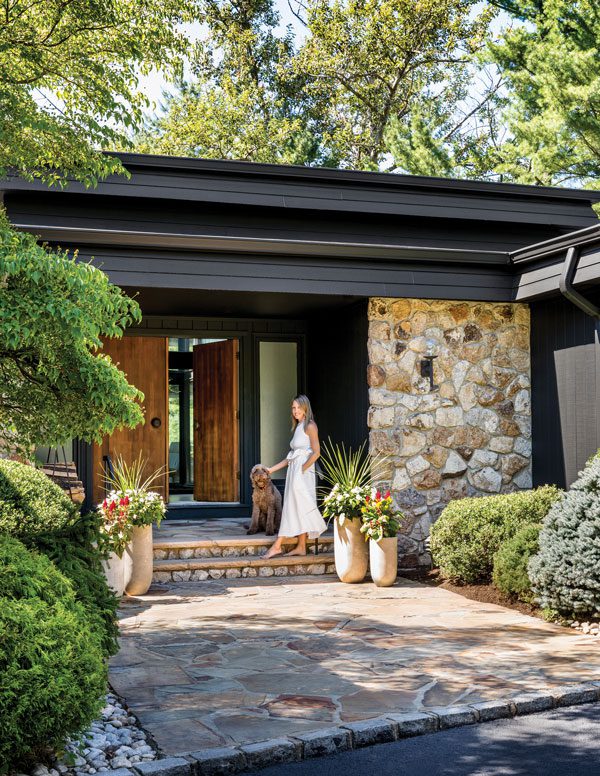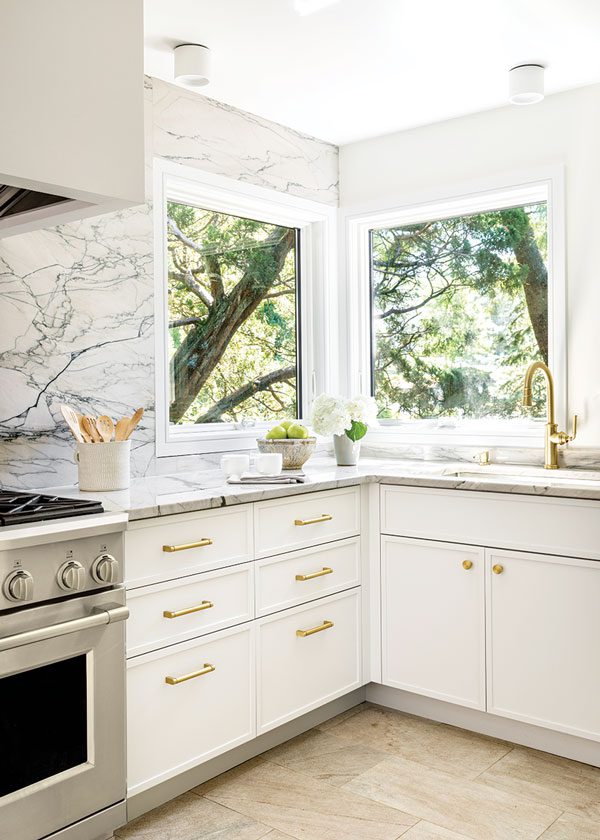Meant To Be
Writer Marirose Krall | Photographer Andrew Frasz | Designer Malyev Schafer | Location Short Hills, NJA series of positive portents leads a designer and her family to a Short Hills home
“Everything about it was serendipitous,” Yana Schafer says about discovering this Midcentury-style home in Short Hills. Schafer, of design firm Malyev Schafer, which has offices in Short Hills and London, explains how everything fell into place the first time she entered the residence. She learned it had five bedrooms when it was built. When a child went off to college, the original owners converted one bedroom into an office and made it a part of the primary suite. “Meanwhile,” Schafer notes, “we have three kids, moved at the height of Covid and were working from home. It felt customized to us.”
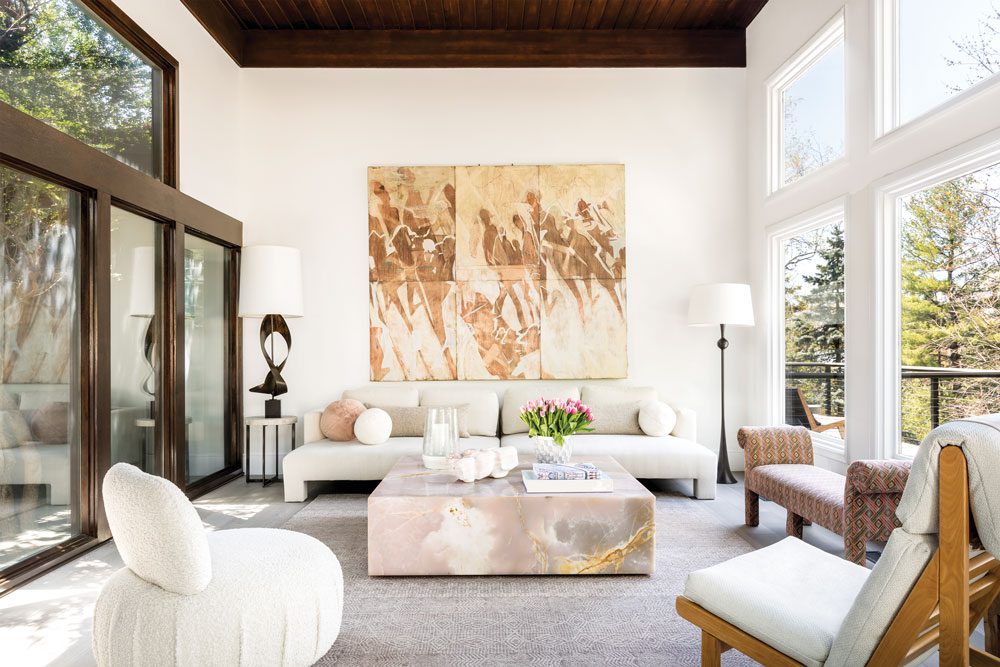
The living room has a neutral palette with hints of color. The artwork over the sofa, which Schafer bought for her husband, is “Parade” by Tom Bostelle. The swivel chair (foreground left) is a 1980s Steve Chase Swivel Soufflé Pouf Chair that she reupholstered. The wood chair, refinished and reupholstered, is a Rag Chair by Bernt Peterson. The table lamp is an original H-905 by Harold Weiss and Richard Barr for Laurel Lamp Co.
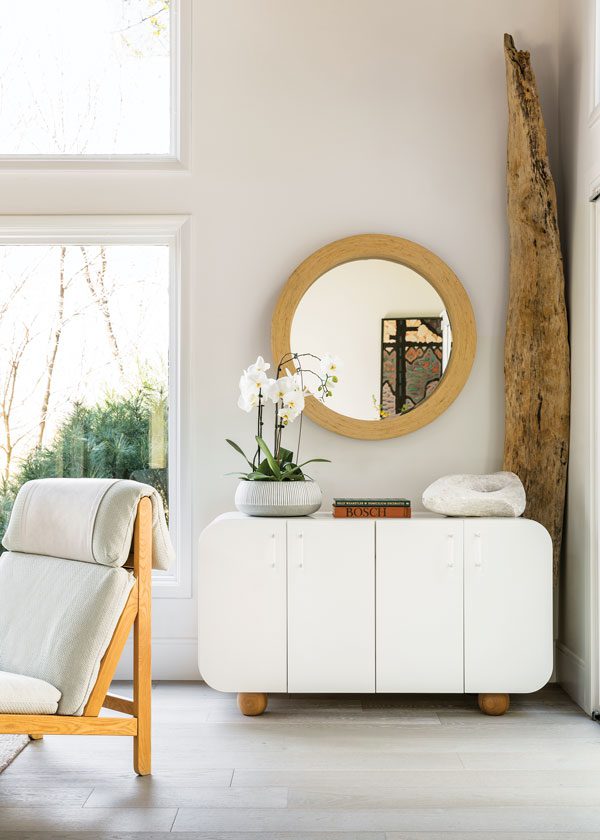
The console in a corner of the living room was originally a wall-mounted cabinet in the primary bedroom. The large piece of driftwood was a beachcombing find. “I was doing a beach walk at Sandy Hook,” Schafer says. “It just about fit in my Subaru Forester. It wasn’t a safe drive home, but that piece was a design necessity.”
But there was another cosmic coincidence: “When we first saw the house, we walked into the dining room. It was furnished with dining chairs just like I had bought at an auction a year earlier.” That was a clear indication for Schafer that this house was meant to be hers. “The style was already mine — even the furnishings were literally what I picked out.”
Schafer was drawn to the home’s contemporary aesthetic. “I’ve always loved that architecture,” she says. “I come from a family of architects. I was raised to love modernism. I just didn’t think I’d be able to find a house like this on the East Coast. When we saw the house go on the market, we weren’t really ready to move, but we bought it for the architecture. We didn’t think we could find a better house.”
Though this was the home of their dreams, the Schafers wanted to make a few changes. “The house in its original state had a very different mood. All the floors were dark, heavy brown ceramic tile, except for the bedrooms, which were carpeted. I wanted something clean but also eclectic.”
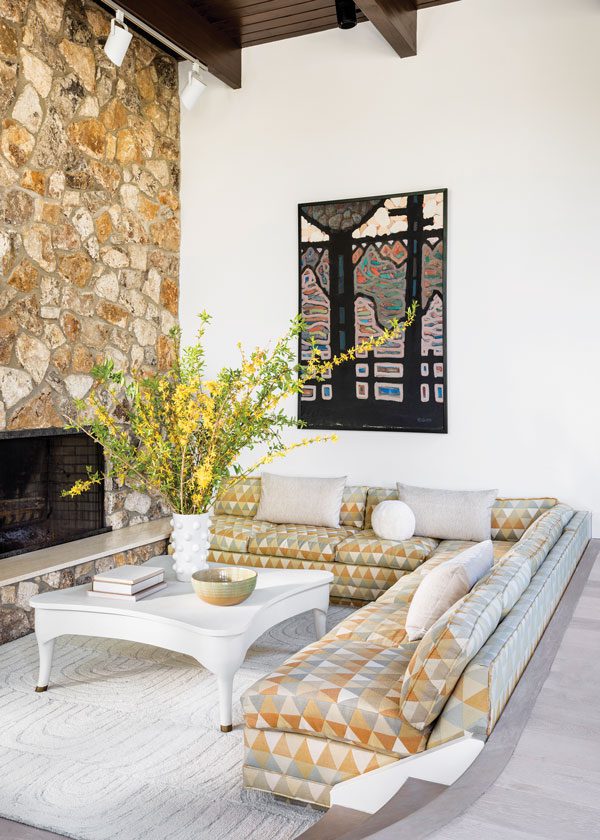
The sectional sofa built into the sunken sitting area was original to the house. The art above the sofa is an abstract landscape by Richard Roberts.
Schafer replaced the dark floors with light oak and furnished the spaces with pieces that work well with the home’s architectural roots. An onyx cocktail table grounds the living room, which is presided over by a large painting on the expansive wall above the sofa. “When we bought the house, I thought ‘I’m going to have to find a huge painting for that wall. Then I saw this. I already owned the onyx table, and this was in the same color palette. I snatched it up.”
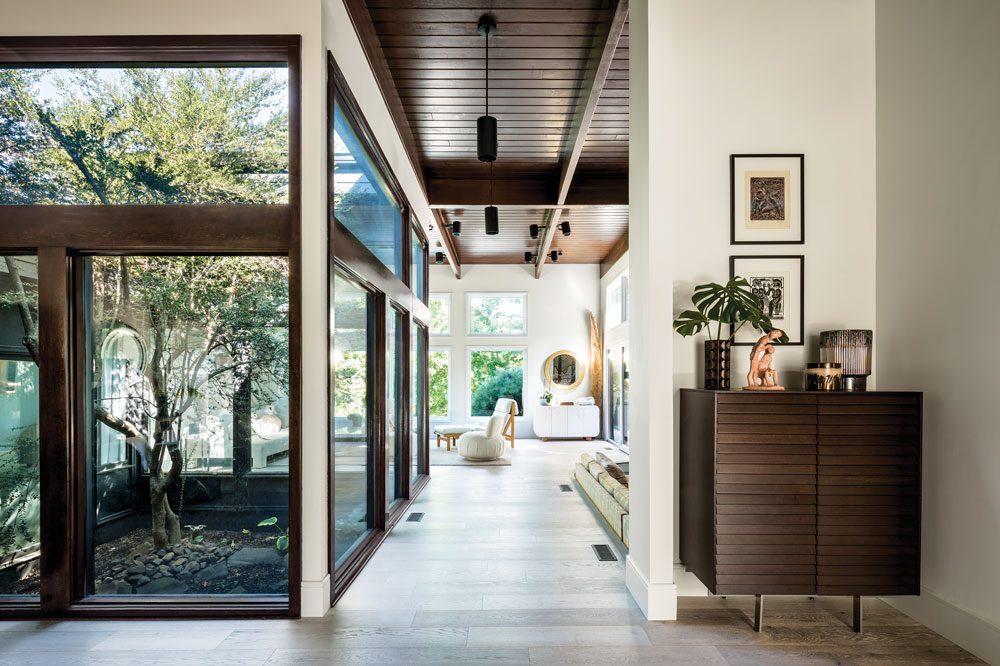
A bar cabinet is tucked into a niche in the entry hallway. The centrally located atrium brings light — and a bit of nature — to the surrounding rooms. “It feels like living in a treehouse,” Schafer says.
Other items didn’t need to be purchased. Schafer notes, “there are a lot of ‘found’ things” included in the décor. A white console in the living room, for instance, was used by the previous owners as a wall-mounted media cabinet in their bedroom. “It’s custom melamine,” the designer explains. “It was built in so they left it behind. We took it off the wall and I added the round wooden legs to make it a standalone piece.” A marble carving displayed on top of the console was crafted by the previous owner who, at one time, had taken up sculpture.
The sofa in the sunken nook near the fireplace is another remnant from the previous occupants. “It’s custom for this room. That was a win,” she says. “There were so many beautiful things from the ’70s that I was just swooning over.”
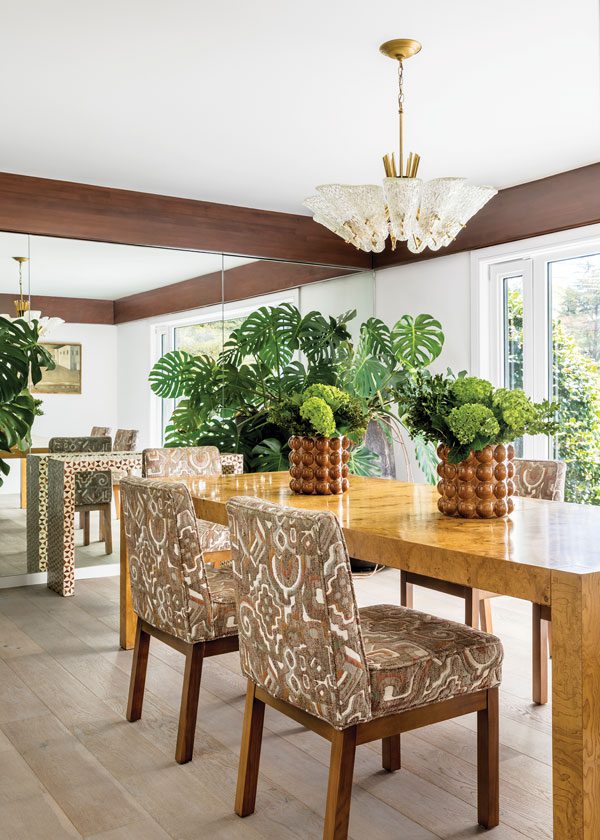
Schafer purchased the vintage Directional dining room chairs at an auction a year before walking into this Short Hills home for a real estate showing and discovering the then-owner had identical chairs. The dining table is vintage Milo Baughman. The glass-and-brass chandelier is vintage Murano.
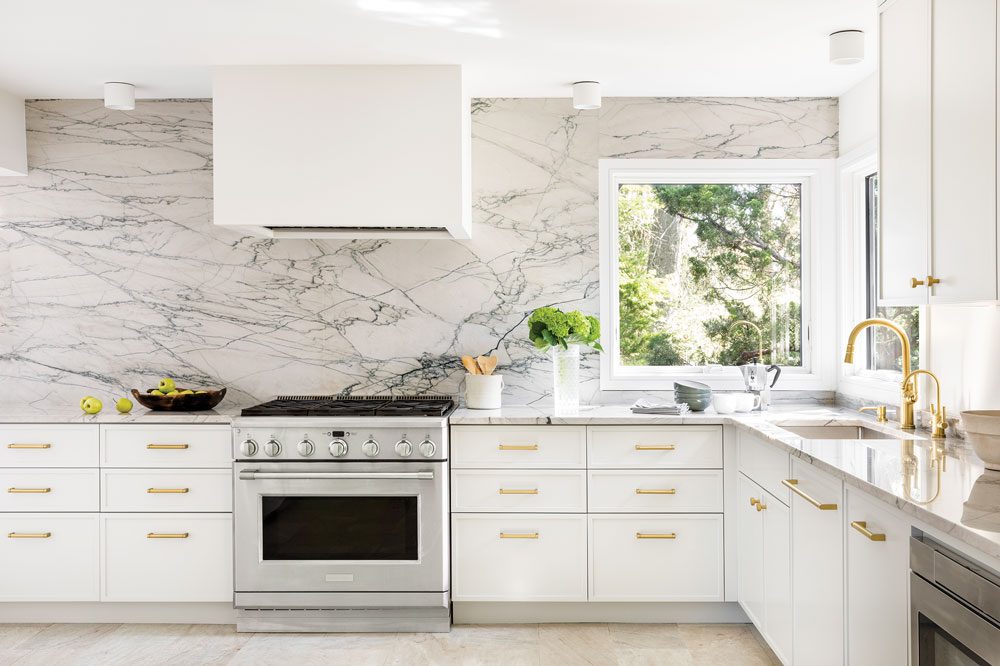
Schafer completely renovated the kitchen. “It used to be a completely closed-off working space. That’s not the life I lead.” The new, more open space is visible from adjoining rooms. “I didn’t want to hide that stone,” she says of the quartzite backsplash.
Perhaps the most prominent of those beautiful things is the central atrium, a popular element in Midcentury architecture. “It’s everyone’s favorite,” Schafer says. “I had a party and hung disco lights in it. It’s the spirit of the house.”
The Schafers — only the second family to live in this residence — have maintained that spirit, as well as their relationship with the previous owners, who still live in the area. “They built this house and they wanted to make sure it gets the respect it deserves. They knew we were going to do right by it.”
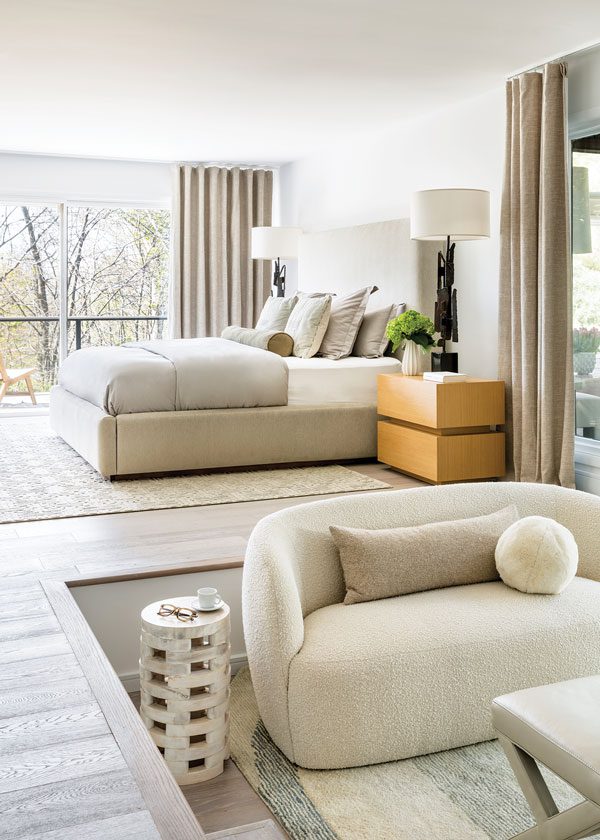
The primary bedroom features soothing tones of taupe and gray. The end tables hold vintage H-734 Assemblage lamps by Richard Barr for Laurel Lamp Co., designed in the early 1960s. “The sculptor’s Watchung workroom was located just 15 minutes from the Short Hills area,” Schafer says, “so the lamp design is native to this part of New Jersey.”
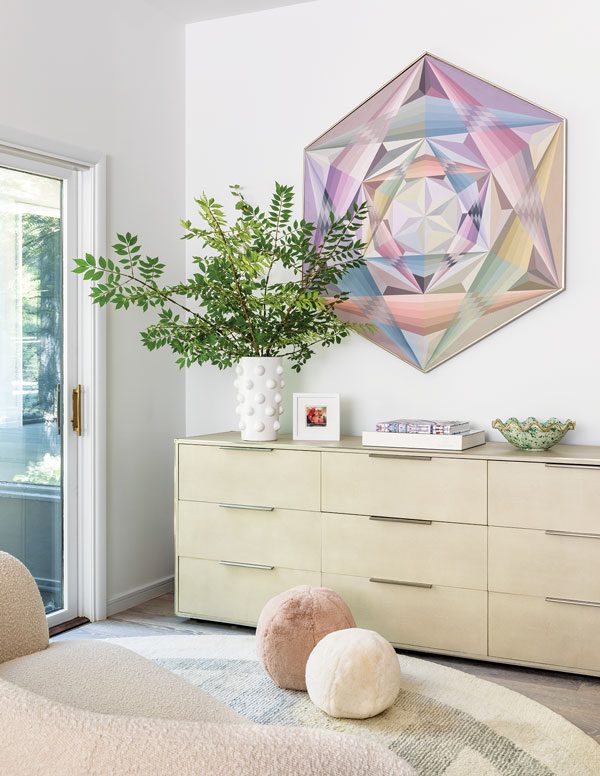
Like the fireplace area downstairs, the primary bedroom features a sunken seating space — a common element in Midcentury design. The artwork above the dresser, featuring kaleidoscopic shapes in distinct but not overpowering hues, is called “Op-Art” by Carole-Lee Simmone. It adds hints of color to the room’s otherwise neutral palette.
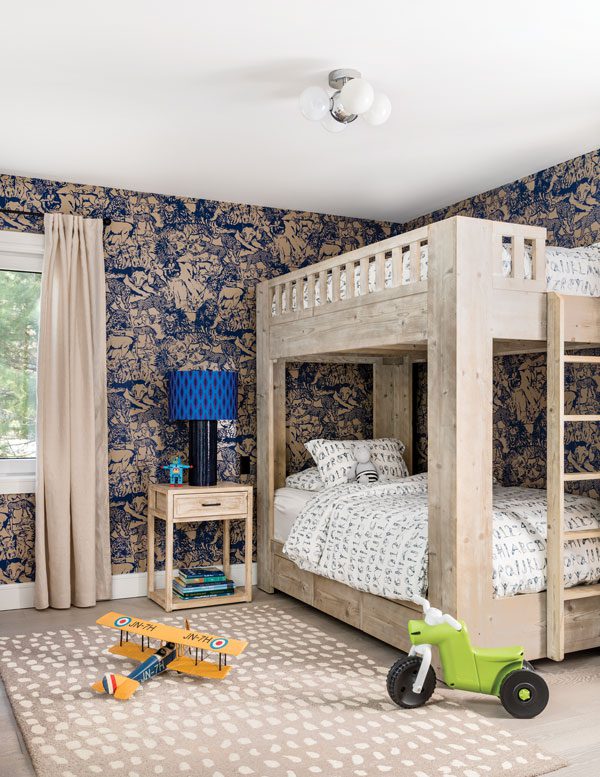
The wallpaper in the bunk room is a 1970s vintage safari animal print and is original to the house. Schafer notes, “My son’s favorite color is blue. I said ‘this is perfect.’ I designed the room around the wallpaper.” The bunk beds have a modern whitewash. “It’s not too vintage. There’s a sense that it’s of our time.”

